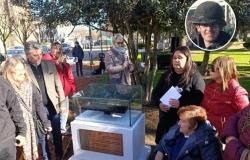By: Anderson Zapata Reyes / Order Editor
The great challenge that the Cali authorities have, in the coming months, is perhaps one of the biggest in recent years: to shield the city so that during COP16 there are no incidents of insecurity or terrorism that affect local residents and visitors. .
In an interview with El País, Jairo García, secretary of security of the city, explains how they are working in an articulated way to achieve this objective, says that his goal is for Cali to close the year below 1,000 homicides and maintains that around 80% of the surveillance cameras are working.
What has been the biggest challenge of these five months leading the security portfolio in Cali?
The first objective has to do with the reduction of violence. From day one that has been the message and Cali must break the trend of homicides that it has suffered in recent years. We must break that floor of 1,000 murders a year.
A second issue that seems to me to have really been a challenge is understanding what it means to protect the Farallones of Cali and work in a consistent and coordinated manner so that we do not have illegal mining in our natural park. That has been a real challenge.
A third topic that we have worked on and that has been very challenging has been everything that has to do with the institutional presence throughout Cali. We have had a great deployment with the Public Force, the Police, the Air Force and the Army, so that it is felt that in the city there is an authority that is willing to work 24 hours a day so that the people of Cali are and feel safer. . This has been seen in the results of the reduction in crimes against property.
What do you know about the arrival of 4,000 police officers to reinforce Cali security before and during COP16?
The preparations are going very well. We have had a very positive relationship, both with the National Police and the Military Forces. In fact, in the first months of the year without even knowing that we were going to host COP16, the National Police allowed us the arrival of 300 additional men and, once we learned that this important event would be held in our city, we had a planning meeting and the General Director of the Institution visited us, we reviewed plans and projected investments.
Currently we are talking about a figure of increasing the force of between 2000 and 4000 men, but that is not only going to be positive for COP -16, but also very good for the general security of the city, because if we reach Having the maximum reinforcement, which is 4,000 men, we could have an additional 40% of the force that Cali has today to carry out surveillance, coexistence and criminal investigation activities.
The bet is that we are not only thinking about COP -16, but that we have an extraordinary second semester in terms of reducing crime related to theft from people, but also to violence.
This planning already has a very clear plan, both in the green zone and in the south, and in the other activities that we are going to develop in the city during COP16 and in the other cultural events that we will have from August, such as the Festival of Music Petronio Álvarez.
What do you know about the possibility that of those 4,000 police officers who will arrive as reinforcements to the city, 2,000 will stay permanently?
The Mayor’s willingness to work hand in hand with the Public Force, both the Police and the Military Forces, is complete.
Having 2,000 more police officers, permanently in Cali, after COP16 does not depend only on intention, but on the possibility that the National Police has to expand that force. For now we have been talking about this complement of uniformed personnel between July and August for the events we will have.
In recent months, resources were announced to strengthen Police communications in Cali and the Valley, since radios and other devices are obsolete. At COP16 would the authorities already have new equipment?
In the last conversations we have had with the Government, they have informed us that they are working very hard to ensure that this project begins before COP16 and that several of the needs in terms of communications infrastructure can be renewed, both for Cali as for the Valley.
Progress has already been made on the requirements so we hope that this investment, which is around $40,000 million from the Government’s security tax, can be met with satisfaction.
Have the control plans on the roads and in critical points of the city, which began with so much impetus in the first months of the year, been maintained?
We continue with them. What we have done is vary the checkpoints and generally, we have around six positions that rotate around the city. Together with the Ministry of Mobility, the Military Police and the Air Force, we have carried out joint and coordinated patrols.
We are going to continue doing it and being throughout the city. The Mayor’s message has been clear and he has asked us to intensify these controls. It must be recognized that this general reduction in crimes has to do with the increase in presence and controls throughout the city.
What we have been doing is identifying additional control points in the city and maintaining those that we are developing jointly with Yumbo, Jamundí and Candelaria.
What plan is in place so that terrorist events like the one that occurred last April in the Pichincha Battalion are not repeated?
A week ago we captured alias El Tigre, directly responsible for the location of the cylinders that affected the Army’s Third Brigade. We have been identifying and deactivating different elements and explosive devices.
It is very important to remind citizens that we want to have their full support and the Mayor has reiterated that there is a permanent reward for information of up to $100 million for calls that allow us to identify, prevent and act in the event of any terrorist event.
In the first five months of the year, 355 homicides occurred in Cali. Does this figure suggest that the year can close with less than a thousand murders in the city?
Our main goal is to break that annual trend that Cali has been having of one thousand homicides. We hope to break that trend; this first year and the results we have been obtaining indicate that we are on the right track and we are consolidating the trend.
Every year it will be the challenge of this administration to protect the lives of the people of Cali and at the end of the year we hope to break this trend of four figures in homicides and that we will systematically have a reduction in the next four years until achieving a figure close to 700 murders.
At the beginning of the year you said that a study was being carried out to determine the status of security cameras in the city. What was the result of that study?
To meet this goal we have to update both software and hardware and we are going to have a responsible growth in the number of cameras. We are also going to strengthen what is called C4 so that in the city there is a single intelligent system for receiving security, health, and risk management emergencies and having a much more efficient dispatch. That is going to be a great challenge in these four years.








